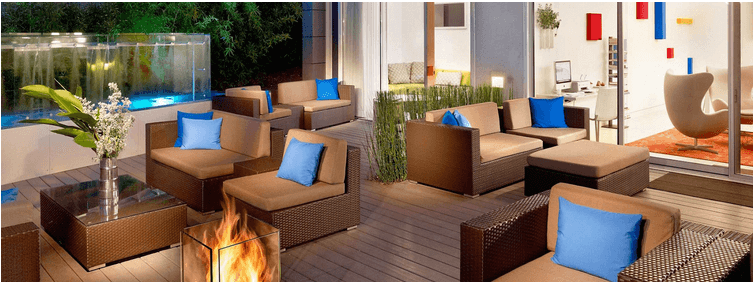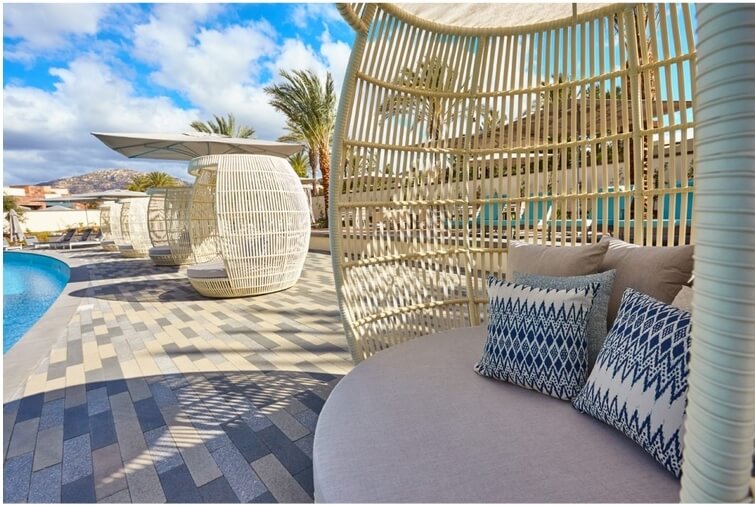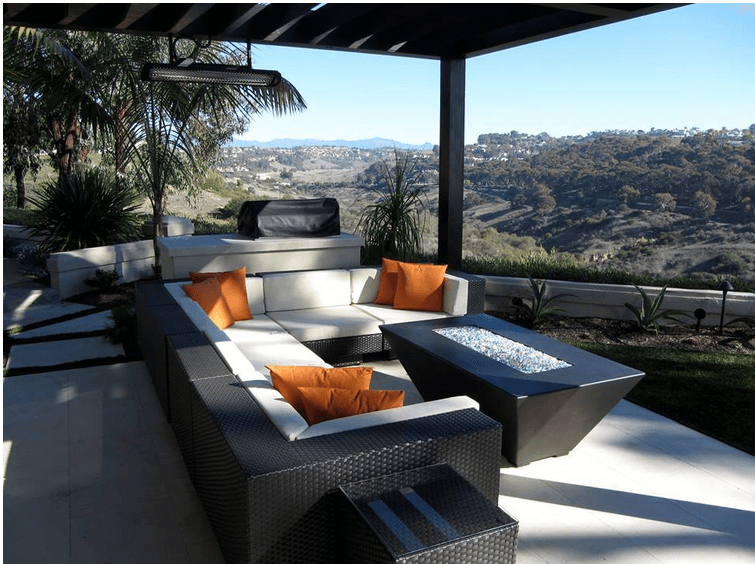The Difference Between Commercial vs Residential Furniture - Babmar

Not all furniture is built alike. Commercial furniture is meant for different purposes than furniture for a private home. The differences appear mainly in the form of the materials used, the designs and colors, and the overall construction.
What is Commercial Furniture?
When choosing between residential or commercial furniture, there are important things to be aware of.
Commercial furniture, such as office furniture, is meant to be used in high-traffic environments where it will get heavy use. and possibly be exposed to punishing outdoor elements. Metal chairs, a commercial outdoor sofa, or a set of outdoor bar tables used on a hotel patio space are a few examples.
Commercial furniture requires materials that will stand up to constant wear and tear, hence the use of commercial-grade fabrics and weather-resistant frames. Commercial furniture requires durable frames made from steel or aluminum.
There are industry standards for the design and construction of commercial furniture which doesn't necessarily apply to other pieces of furniture. Because it’s built to last, commercial outdoor furniture tends to be more expensive than residential furniture.
What is Residential Furniture?
Residential furniture is meant to bring warmth and style to a home. It’s built mainly for everyday comfort and style, and to reflect current trends in design. Residential furniture uses softer materials, lighter finishes, popular woods, and metals. It doesn’t have to stand up to the kind of heavy traffic, and wear and tear that commercial furniture endures over the long run.
The range of designs, patterns, and colors for residential furniture is wider than what you’ll find in commercial pieces. A cushy couch you can relax on after work will have different style and comfort qualities than a commercial outdoor sofa.
Difference Between Commercial and Residential Furniture

The difference between commercial and residential furniture is primarily in where and how it’s used.
Residential furniture is designed to accommodate less traffic and offers a greater range of materials and fabric styles.
Commercial furniture gets constant use on a daily basis and under many different conditions. Frequently, there are commercial pieces that are used in outdoor settings like next to a hotel swimming pool or a restaurant patio.
Commercial furniture must be able to withstand weather conditions as well as heavy traffic. The cushions require moisture-resistant high-density foam that will last. The frames require special finishes, and heavier woods and metals like steel or rust-resistant aluminum. This makes commercial furniture more expensive than residential pieces: it’s built to last.
Purpose and Function
The purpose and function of residential furniture is to add comfort and style to a home. When it comes to commercial furniture, comfort and style are also involved, but it’s meant to stay that way under heavy traffic and different conditions, including a variety of outdoor elements. For those reasons, it must endure in a different way.
Material
Commercial furniture requires special fabrics that will resist water, mold, and sun. Cushions must be made of higher-density, moisture-resistant foam; residential furniture doesn’t necessarily need them. These fabrics may also be required to be fire resistant.
The frames and construction of commercial furniture must be sturdier than put to the test on a daily basis and under punishing conditions. Residential pieces don’t undergo the same kinds of usage and stress.
Design
Residential furniture offers a wider range of designs and options to suit your home and be aesthetically pleasing to your personal style. Commercial furniture is typically created in limited sizes and with a more neutral appearance to better accommodate different surroundings and outdoor environments. However, most commercial furniture manufacturers offer customization options. Talk to your furniture dealer to see what's available.
Durability
Residential furniture is meant for everyday use, but it doesn’t have to contend with the punishing traffic and wear and tear that commercial furniture endures over long periods. For commercial furniture pieces, cushions must be high-density, frames must be made of stronger materials like steel, and the fabrics must be weather-resistant. Overall surfaces need to also be scratch-resistant and they often feature durable polyurethane coatings.
Warranty
Both residential-grade furniture and commercial furniture come with a warranty; the difference is in the length of coverage and what specifically is covered. Residential furniture is typically covered by a short-term warranty (30 days to a year is standard) and is usually limited to defects from manufacturing.
Commercial furniture usually includes either a lifetime or a warranty for 1-3 years, covering normal use and certain user-related issues.
Industry Standards
Because it’s used in high-traffic public areas like restaurants or office space, commercial furniture manufacturers need to meet higher standards to handle constant use. For example, commercial upholstery and fabrics must be fire-retardant and stain-resistant. The weight capacity for a commercial chair must support up to 350 lbs or more. When it comes to manufacturing residential furniture, a seat may only need to support 250 lbs.
Cost
Furniture for commercial use tends to cost more than residential furniture. This is because the materials required to meet industry and safety standards and to endure constant use plus surrounding environmental conditions simply cost more. Commercial furniture is built to last and comes with either a multi-year or lifetime warranty that protects your investment.
Conclusion

Whether it’s residential-grade furniture or commercial, furniture is meant to provide comfort and style to a space. The needs for commercial outdoor furniture are different than pieces that will be used in a private home. Because they’ll be used in high-traffic areas and often under punishing outdoor conditions, every element of the furniture must be stronger. Frames require sturdier metals and protective coatings than what’s used in residential furniture. Fabrics must be waterproof, weather-resistant, and stainproof. The furniture cushions must stay firmer and the overall designs must be neutral enough to easily fit into different spaces.
Residential-grade furniture typically includes a warranty lasting up to a year and covering manufacturing defects; for commercial furniture, the warranties are either multi-year or for the life of the piece. This offers peace of mind in protecting your investment.
The cost of commercial-grade furniture tends to be more than for residential furniture. This is due to the higher-quality materials that are required to make pieces that meet industry and safety standards and will last over constant use.
